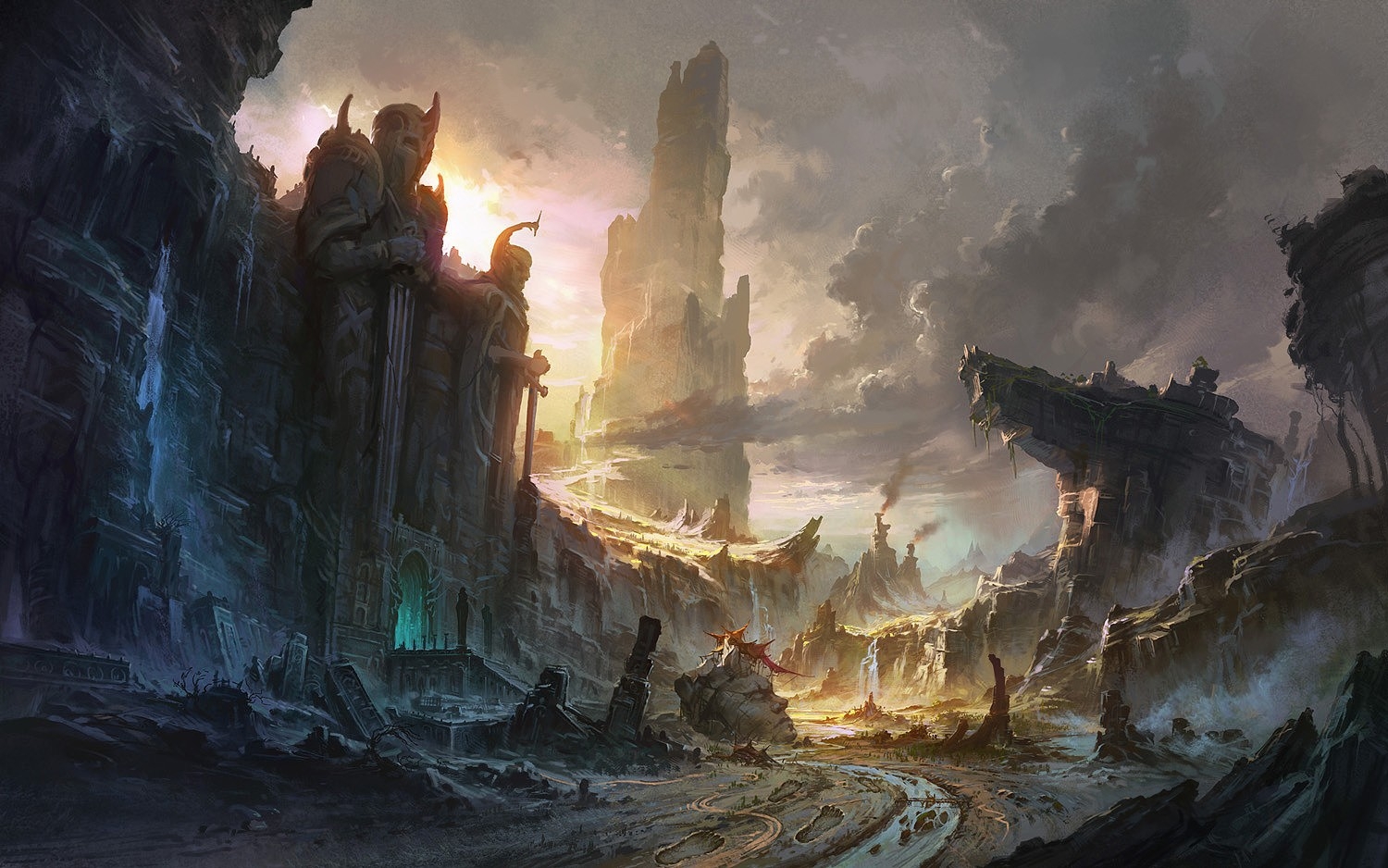Arata Blades
Elsewhere in the world, the single edged swords of the Crane Basin are considered something of a rarity, a collector's item, due to the isolation the Basin had observed for centuries. These blades are finely crafted and bear a distinct shape, but within the Basin, their use is universal, their wielders as numerous as the trees that populate the landmass. The arata blades may be an exotic keepsake for collectors the world over and a efficient and treasured weapon by those of the Basin, but no one can deny they are well crafted weapons.
Manufacturing process
In the earliest days, the arata were forge from lengths of metal hammered out on an anvil until the required length, and them sharpened to a fine edge for plowing and tilling the fields. This served the purpose required for farm work, but when wartime came and the blades were repurposed, this process would not lead to long lasting, sturdy blades. It was common for arata fighters to avoid clashing with these early blades in hopes to prevent them from shattering in the midst of combat. Slowly, the process would encourage longer forging times and the folding of the metal to better strengthen it for the final product.
When the process was refined to produce the blades of today, it was done so by heating the metal multiple times and folding it over and over itself to increase durability and remove impurities before drawing it out into the blade form itself. Some more excitable collectors and enthusiasts claim a number of folds in the thousands, but the smiths of the Basin and these blades in particular have never confessed a number, if one exists in tradition at all.
This constant folding of the forging metal ingot in the creation of the arata creates very diverse and interesting patterns as the various metals used can be seen in a sort of indiscriminate wave like pattern along the length of the blade, patterns resembling the patterning of the Acrean smiths of the Cape of Ross, just east of the Basin. There proximity to one another would lend itself to this shared patterning, but the isolation of the Basin until recently debunks many theories that there was a trade in the art between the two peoples, but historians continue to debate and theorize these uncanny similarities.
History
The arata blade was first used as the blade of a plow in the early days of civilization within the Basin. ruthless overlords and brutal shongunate rulers worked the peasantry to the bone in all corners of the vast river lands, ill equiped to ever revolt and topple their harsh rulers, until they started to use their farm equipment as the means to arm themselves. Folk would take the two blades of their plows and fashion handles to them in order to use them as bladed weapons, then hide them as the common farm tools they had been when the overlords came looking.
In time, the hands of rulership would change, but the arata blade would remain and be refashioned into the blade of the Basin. Plow blades would see a change as rather than being two separate blades, they would be crafted from a singular extended blade so as to both innovate the tool, as well as discourage the use of these crudely fashioned cousins to their more refined counterparts.
Significance
When the yoke of the oppressive early regimes were crushed, the blades took on a prestige as the blades of liberation, the blade of the common man, as any man with a plow could wield them in defense of his home and family. Tradition, history, and cultural values were all attributed to these blades so when the forging process was refined into the sleek blades of common today, they would not only serve as weapons for skilled and wealthy folk, but also as a pillar of culture and tradition within the Basin.
As the old tradition of the blades meant there would be two blades taken from the plows of the old days, so too, as the centuries would continue, would an arata blade be forged with a sibling blade. It is said that this process consecrates the blades, making them karmically blessed and connected for all time. These sibling blades would go to a patriarch and his heir, a Lord and his right hand, a Commander and his lieutenant, etc.
Item type
Weapon, Melee
Current Location
Related ethnicities
Rarity
The Arata blade is a common weapon found within the Basin. Many people who can afford one, or forge one themselves carry one with them. It is a mark of wealth, prestige, and skill.
Base Price
60 gp
Raw materials & Components
The blades themselves are forged from some kind of metal, most commonly iron or steel, but more ornamental blades can be an alloy of strong and precious metals to distinguish the blade by the subtle or sometimes flamboyant expression of hues within the folds of the metal.
Wood or metal is often used to form the guard at the hilt as well as the pommel. both of these pieces serve both a function as well as an opportunity to further decorate and distinguish the sword as a whole. Each piece caps the hilt and handle of the blade, which is most commonly wood wrapped in woven cord, leather, or another sturdy fabric.


